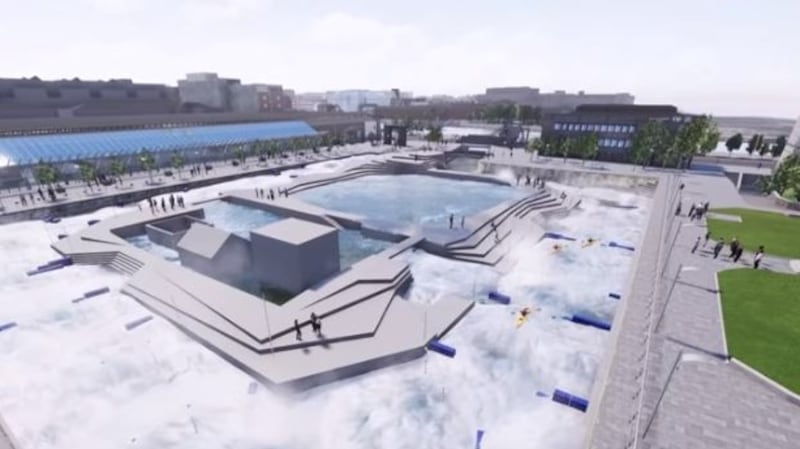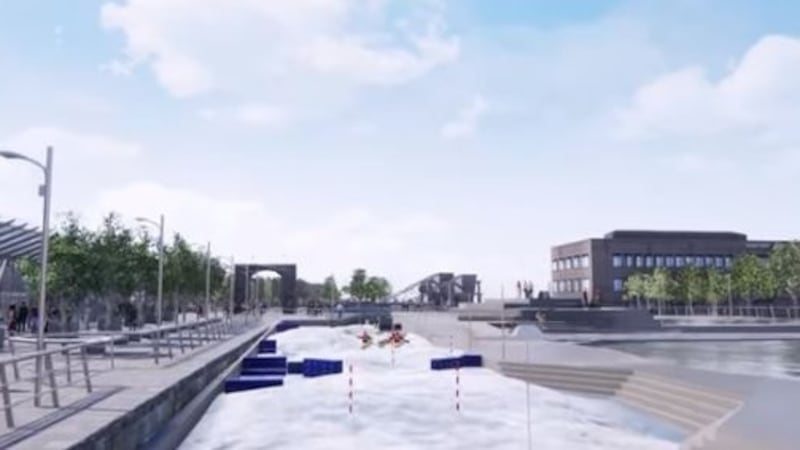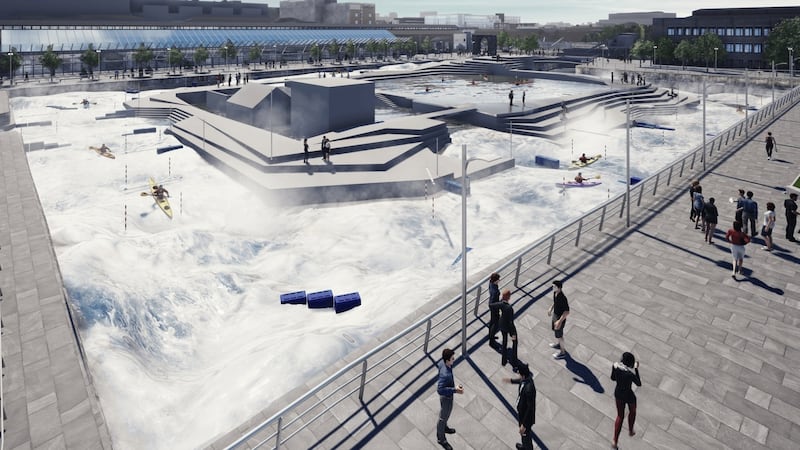There are many reasons the white-water rafting proposals for George's Dock in Dublin sank. Cost was certainly a major factor. When plans for the facility – which would include a water polo and kayaking pool, and a Dublin Fire Brigade training facility – were originally presented to councillors in January 2019 it was expected to cost €12 million. By December of that year, when it was approved by councillors it had risen to €23 million. Ultimately, when the council sought expressions of interest to build the scheme more than a year later, it hit the €25 million mark.
The fact the project had a price tag which exceeded €20 million meant it was subject to additional cost analyses tests and funding applications
The likely cost of a trip down the mechanical rapids also raised some eyebrows. Figures produced as part of the council’s business case for the facility, which emerged in the days after it was approved by councillors, indicated group water rafting for eight people and one instructor would work out at €400 per raft or €50 per person. Family white-water rafting for six and one instructor would total €150 per raft.

Delays, which frequently play a part in the foundering of council projects, also hit the scheme.
When floating the idea at the start of 2019, council officials had hoped to have the agreement of the councillors ahead of the local elections in the summer. That didn’t happen, and while the new council did approve it by the end of the year, the fact the project had a price tag which exceeded €20 million meant it was subject to additional cost analyses tests and funding applications, and then the pandemic hit and it appeared less and less likely to launch.
Sloshing around
However, the overriding factor scuppering the scheme was sentiment. The project never really floated the councillors' boats. Nial Ring, lord mayor when the project was first proposed, described it as a white elephant. The Green Party's Ciarán Cuffe, then a councillor, said it was the type of grandiose project proposed towards the end of an economic period when there's money sloshing around.
The project was not finding favour on social media either, with calls for the money to be spent on homelessness or housing instead
However, then the fire brigade waded in giving the project a massive fillip with their support for its use in rescue training to deal with fast moving waters, including floods.

This is certainly what resulted in the councillors approving the project, with a vote of 37 to 19 in favour. Fianna Fáil, and most Fine Gael and Sinn Féin councillors, and half of the Labour and Independent councillors, were in favour, with the other half, along with the Greens and People Before Profit, and a scattering of others against.
The buoyant mood didn't last long. The then taoiseach Leo Varadkar poured cold water on the project that same month, when as part of a dig at Sinn Féin he suggested its councillors would be better off supporting higher property tax to fund council services instead of supporting white-water rafting.
Funding streams
The project was not finding favour on social media either, with calls for the money to be spent on homelessness or housing instead. While most councillors would be aware the funding streams earmarked for the white-water project could not be transferred to those services, they also became less enamoured with the project.
Ultimately, however, it was its greatest champion, council chief executive Owen Keegan, who pulled the plug after it became clear earlier this year that Government-funding would not be forthcoming.
There had been “a considerable amount of negative commentary related to this project,” he said. “This has created a narrative around the project that appears impossible to reverse and that has undermined the planned funding of the project.”
There was he said “significant hostility towards the elements of the project that will boost the tourism offer in Dublin and provide a world-class sporting facility and little recognition of the potential of the proposed facility to support a wide range of community development activities”.

George’s Dock is drained and derelict and the council says it is “still in need of an imaginative solution and it is clear that a water-based activity is the most suitable use for the dock” .
There also remained a need for swift-water training for the emergency services, it said. A new plan incorporating these elements will be brought to the city councillors next year. It’s unlikely the term white-water rafting will be anywhere near the next project, but in essence, it may not be dead in the water yet.









